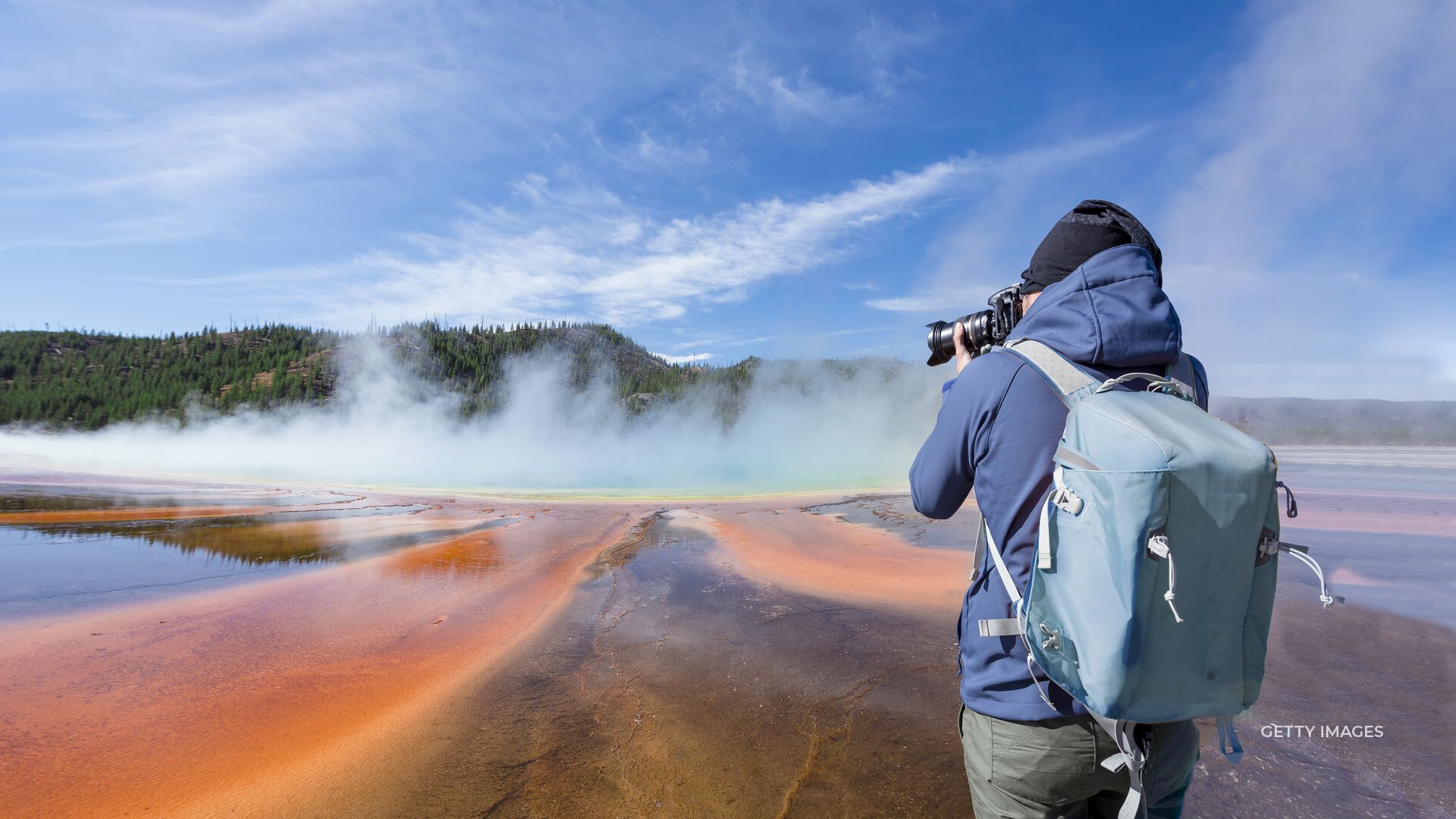
MAHMOUD BENNETT: YELLOWSTONE WILL CELEBRATE ITS 151ST YEAR IN MARCH.
IT’S A MAJOR MILESTONE FOR THE COUNTRY’S OLDEST NATIONAL PARK AND AN OPPORTUNITY TO SET THE RECORD STRAIGHT ABOUT THE SUPERVOLCANO THAT LURKS BENEATH IT.
WE’RE DIGGING INTO IT IN THIS STRAIGHT ARROW NEWS 2-PART SERIES.
TERRIFYING REPORTS HAVE BEEN SWIRLING THAT IF IT ERUPTS, IT WOULD CAUSE A “NUCLEAR WINTER” AND KILL NEARLY 100,000 AMERICANS.
MIKE POLAND | GEOPHYSICIST U.S. GEOLOGICAL SURVEY: “It’s unfortunate that Yellowstone has this strange reputation that has basically been pushed by these sensationalist documentaries. And there’s a lot of clickbait. And it’s really disappointing.”
MIKE POLAND IS THE SCIENTIST-IN-CHARGE OF THE YELLOWSTONE VOLCANO OBSERVATORY. HE SAYS ALL THE HYPE CENTERS AROUND THE VOLCANO’S LAST LARGE ERUPTION, 631,000 YEARS AGO. IT WAS THOUSANDS OF TIMES LARGER THAN THE 1980 ERUPTION OF MOUNT ST. HELENS, WHICH IS CONSIDERED THE WORST VOLCANIC ERUPTION IN U.S. HISTORY. IT KILLED 57
PEOPLE, SHOT 520 MILLION TONS OF ASH ACROSS THE U.S., AND CAUSED COMPLETE DARKNESS IN PARTS OF WASHINGTON STATE.
POLAND: 07:24 “If at some distant point in the future, there was a really large explosive eruption that put a lot of ash and a lot of gas into the stratosphere, then yes, you could see all kinds of really incredible impacts that would that would stretch globally 08:03 But that’s one of those scenarios where the entire magma chamber has to erupt. Far more likely, is a lava flow that probably, frankly, will be more of a tourist attraction.”
POLAND SAYS THE LAST SMALL ERUPTION WAS 20,000 YEARS AGO, AND THE LAST LAVA FLOW WAS 70,000 YEARS AGO.
POLAND: 09:30 The kinds of lava flows we get in Yellowstone are not like the ones that we see in a place like Hawaii. They’re not these sheets of molten red rock that spread out over the landscape. Instead, these sort of thick piles of rock or rubble that move slowly across the landscape. It’s the kind of thing you could walk away from pretty easily but anything that it touches anything that it comes into contact with will be destroyed.
SCIENTISTS BELIEVE THERE IS ONLY 16 TO 20% MELTED ROCK IN YELLOWSTONE’S MAGMA RESERVOIRS. WHICH IS WELL BELOW THE THRESHOLD NEEDED TO TRIGGER AN ERUPTION, WHICH IS ABOUT 35 TO 50%. THIS DRIVES HOME THE POINT THAT THE SYSTEM IS MOSTLY SOLID. PARTLY BECAUSE IT DOESN’T SIT ON AN OCEAN PLATE LIKE THE OTHER ACTIVE VOLCANOES IN THE WORLD.
BOB SMITH | PROFESSOR OF GEOPHYSICS, UNIVERSITY OF UTAH: “Yellowstone is the only feature that’s beneath a continental plate. And that makes it quite different because of the continental plate. It requires more energy to get the material from the magma reservoir to the surface.”
THAT DOESN’T MEAN YELLOWSTONE ISN’T ACTIVE. DR. ROBERT SMITH IS CONSIDERED A LEADING EXPERT ON YELLOWSTONE’S SUPERVOLCANO AND ITS HAZARDS. HE SAYS 95% OF IT’S DANGER IS CENTERED AROUND EARTHQUAKES.
IN PART TWO OF OUR SERIES, WE’LL DIG DEEPER INTO THAT, AND WHY YELLOWSTONE SHOULD BE REVERED, RATHER THAN FEARED.
POLAND: “There are more geysers in Yellowstone than any place else on Earth. About half the geysers in the world are in Yellowstone.”






